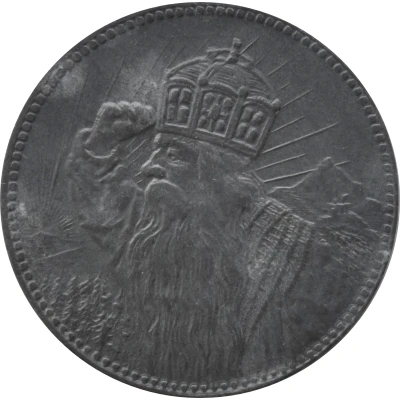


© Willem63 (CC BY-NC-SA)
50 Pfennigs - Bad Reichenhall
1918 year| Zinc | 3.5 g | 23.7 mm |
| Issuer | City of Bad Reichenhall (Federal state of Bavaria) |
|---|---|
| Type | Standard circulation coin |
| Year | 1918 |
| Value | 50 Pfennigs (50 Pfennige) (0.50) |
| Currency | Mark (1914-1924) |
| Composition | Zinc |
| Weight | 3.5 g |
| Diameter | 23.7 mm |
| Thickness | 1.4 mm |
| Shape | Round |
| Technique | Milled |
| Orientation | Medal alignment ↑↑ |
| Demonetized | Yes |
| Updated | 2024-10-04 |
| Numista | N#173703 |
|---|---|
| Rarity index | 81% |
Reverse
Bust of Emperor Karl am Untersberg
Edge
Plain
Comment
Issuing body: [Stadt, Bayern].Interesting fact
One interesting fact about the 50 Pfennigs - Bad Reichenhall 1918 coin is that it was minted during a time of economic and political turmoil in Germany. The country was experiencing hyperinflation, and the value of the German mark had decreased significantly. As a result, the government decided to introduce a new currency, the Rentenmark, which was pegged to gold and was intended to stabilize the economy. The 50 Pfennigs - Bad Reichenhall 1918 coin was minted in zinc, which was a cheaper alternative to traditional metals like silver or gold, and was one of the last coins minted before the introduction of the Rentenmark. Despite its low value, the coin remains a interesting piece of history for collectors and numismatists.